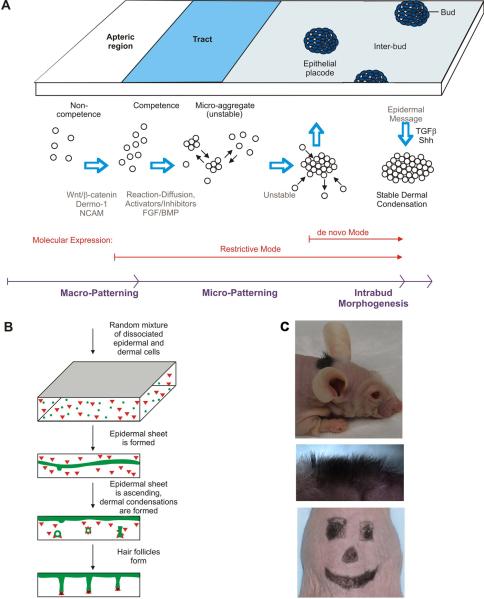Figure 6.
A. Schematic summary showing the periodic patterning process during feather morphogenesis. Epithelial – mesenchymal signaling fosters the formation of competent epithelium. Spatially distributed activators and inhibitors of feather formation promote the expression of adhesion molecules which lead to the formation of unstable microaggregates. In these early stages, FGF acts as an activator while BMP acts as an inhibitor. The expression of FGF/pERK later promotes chemotaxis toward a signaling center in this patterning process leading to the formation of stable epithelial placodes and dermal condensations. The placode boundary is unstable at fitow but then becomes stabilized. Adapted from Lin et al., 2009. B. Schematic drawing of the hair reconstitution procedure. Green, epidermal cells; red, dermal cells. Cells are mixed randomly in the three dimensional matrix. Epidermal cells sort themselves out and coalesce to form a layer first near the bottom of the matrix which then rises to the top surface. Dermal cells form condensations adjacent to the epidermis. Hair germs appear periodically and progress to form hair pegs and later, hair follicles. The morphogenetic process occurs between about day 5 to 12 after grafting. C. Reconstituted hair follicles form normally. Using a reasonably stiff matrix to hold multipotential cells, the graft can be cut to specific shapes and sizes for cosmetic applications. Panels B and C are from Lee et al., 2011.

